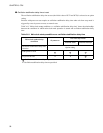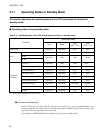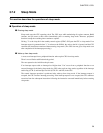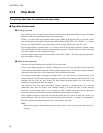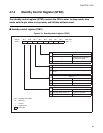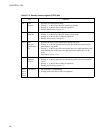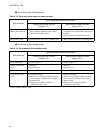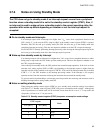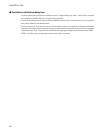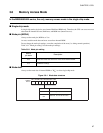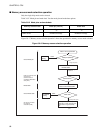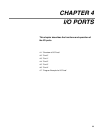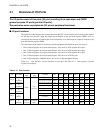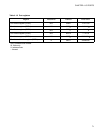
64
CHAPTER 3 CPU
●
Go to normal state (RUN) and reset
●
Go to/wake-up from standby mode
Table 3.7-3 Go to main clock mode run state and reset
State transition
Conditions/events required for transition
Products with power-on reset
(Figure 3.7-2 )
Products without power-on reset
(Figure 3.7-3 )
Go to normal state
(RUN) after power-on
[1] Main clock oscillation stabilization delay
time completes (timebase timer output).
[2] Wake-up from Reset input.
[1] External reset input must be held asserted
until main clock oscillation has had time to
stabilize.
[2] Wake-up from reset input de-asserted.
Reset in RUN state [3] Have external, software, or watchdog reset. [3] Have external, software, or watchdog reset.
Table 3.7-4 Go to/wake-up from standby mode
State transition
Conditions/events required for transition
Products with power-on reset
(Figure 3.7-2 )
Products without power-on reset
(Figure 3.7-3 )
Go to sleep mode [1] STBC: SLP = "1" [1] STBC: SLP = "1"
Wake-up from sleep
mode
[2] Interrupt
[3] External reset
[2] Interrupt
[3] External reset
Go to stop mode [4] STBC: STP = "1" [4] STBC: STP = "1"
Wake-up from stop
mode
[5] External interrupt
[6] Main clock oscillation stabilization delay
time completes (timebase timer output).
[7] External reset
[8] External reset (during oscillation
stabilization delay time)
[5] External interrupt
[6] Main clock oscillation stabilization delay
time completes (timebase timer output).
[7] External reset
[8] External reset (during oscillation
stabilization delay time)
STBC: Standby control register



